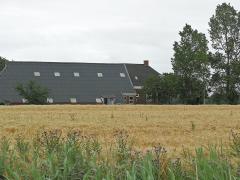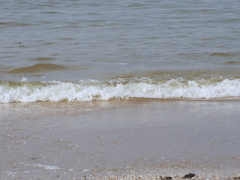Management, regulation and environmental impacts of nitrogen fertilization in north-western Europe under the Nitrates Directive; a benchmark study
Implementation of the EU Nitrates Directive and its environmental impacts were compared for Member States in the north-west of the European Union (Ireland, United Kingdom, Denmark, the Netherlands, Belgium, northern France and Germany). The most marked effect since the introduction of the directive in 1995 is a decrease in the nitrogen (N) surplus.
Issues of improvement of the directive
Implementation of the EU Nitrates Directive in the considered Member States is fairly comparable regarding restrictions to where and when to apply fertilizer and manure, but very different regarding application limits for N fertilization. Issues of concern and improvement of the implementation of the directive are accounting for the fertilizer value of nitrogen in manure, and relating application limits for total nitrogen (N) to potential crop yield and N removal.
Environmental effect of the directive
The most significant environmental effect of the implementation of the directive since 1995 is a major contribution to the decrease in the soil N balance (N surplus), particularly in Belgium, Denmark, Ireland, the Netherlands and the United Kingdom. This decrease has been accompanied by a modest decrease in nitrate concentrations since 2000 in fresh surface waters in most countries. This decrease is less prominent for groundwater in view of the delayed response of nitrate in deep aquifers. In spite of improved fertilization practices, the south-east of the Netherlands, the Flemish Region of Belgium and the French region of Brittany remain to be regions of major concern in view of a combination of a high nitrogen surplus, high leaching fractions to groundwater and tenacious exceedances of water quality standards.
Different procedures in Member States are a handicap when benchmarking
On average, the gross N balance in 2008 for the seven Member States reported to EUROSTAT and in national reports was about 20 kgNha−1 yr−1 lower than when using a uniform calculation method as implemented in the MITERRA model. The major cause for this difference was the higher estimate of N removal in national reports, which sometimes was more than 50 kgNha−1 yr−1 higher than in the model. Differences between procedures in the various Member States to assess nitrogen balances and water quality and a lack of cross-boundary policy evaluations are a handicap when benchmarking the effectiveness of the EU Nitrates Directive. This provides a challenge for the European Commission and EU Member States, as the directive remains an important piece of legislation for protecting drinking water quality in regions with many private or small public production facilities and for controlling aquatic eutrophication due to agricultural sources.
Authors
Specifications
- Publication title
- Management, regulation and environmental impacts of nitrogen fertilization in north-western Europe under the Nitrates Directive; a benchmark study
- Publication date
- 14 December 2012
- Publication type
- Publication
- Magazine
- Biogeosciences
- Product number
- 857




